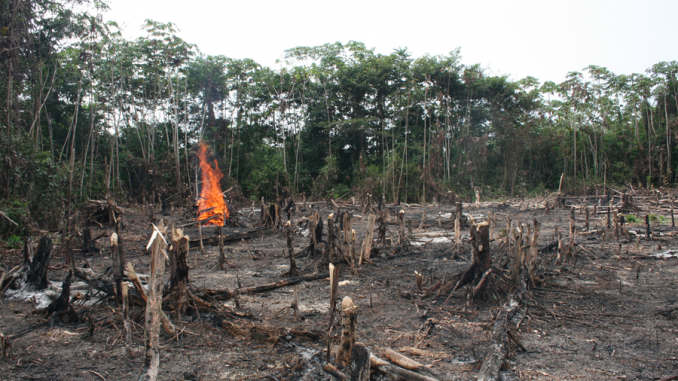
In News
A new report from the Intergovernmental Panel on Climate Change (IPCC) of the United Nations (UN) has presented evidence of how land use is being affected and affects climate change.
In-Detail
- Land that is put to use for forestry, agriculture, industries, urbanisation, etc., has an impact on the emissions of greenhouse gases.
- Land-based activities contributed a quarter of all greenhouse gas emissions in a year amounting to 12 billion tonnes of CO2 equivalent.
- The report particularly noted that the global food system that includes activities like cattle rearing, food processing, food transportation, agriculture, etc., account anywhere between 21 to 37 percent of the overall global greenhouse gas emissions.
- The report, after assessing all possible land-use patterns has outlined some measures that will not affect the global food system.
Land Use
- The talk of climate change has always involved land use and land-use changes in it as land is both a cause for GHG emissions and also acts a carbon sink.
- Activities like cattle rearing and agriculture lead to the release of nitrous oxide and methane into the atmosphere, both greenhouse gases and potent than CO2.
- But, the presence of plants, trees, and forests on land absorb carbon dioxide from the atmosphere.
- Land being both the source of emissions and its reduction, land-use changes like deforestation, urbanisation and others have effects on climate change.
- Between 2007 and 2016 the land sector contributed 5.2 billion tonnes of CO2 emissions annually while it absorbed 11.2 billion tonnes. There was a net removal of 6 billion tonnes of CO2 from the atmosphere.
- Though the discussions on land-use changes related to climate change are an integral part of climate change negotiations, the report specifically points to the impact of these changes on the global food systems.
Food Security Under Threat
- The report notes that the humanities ability to feed itself is under severe pressure due to overexploitation of land and water resources
- As per the report, half a billion people are living in areas that are fast turning into deserts.
- The soil loss is 10-100 times faster than it is forming in these areas.
- These threats are being exacerbated by climate change in the form of droughts, floods, storms and other weather extremes. These will disrupt the global food supply over time.
- An estimated 10% of the population is already undernourished and food shortages will lead to an increase in cross-border migration.
- According to the experts, the food crisis might occur in several continents at once. Already the potential for multi-breadbasket failure is increasing.
- The food crisis will affect the poorer countries more than the richer countries.
Measures of Hope
- The report has offered some measures of hope to address the looming crisis.
- The measures include a major reevaluation of land use including agricultural practices.
- Increasing land productivity, wasting less food, changing dietary habits of people from cattle meat to other types of meat.
- The report notes that, if proper changes to the land use pattern in agriculture and animal is implemented, 2.3 to 9 billion tonnes of CO2 equivalent can be avoided by 2050.
- Also with changes to the people’s dietary habits CO2 equivalent of 8 billion tonnes can be avoided by 2050.
IPCC
- The Geneva-based IPCC is mandated by the UN to assess science related to climate change.
- Generally, the IPCC reviews already published science reports on climate change that are in the public domain. But, this is the first time it has concentrated solely on the land sector.
- The new report is part of a series of reports it is reviewing in the run-up to sixth Assessment Report (AR6) in 2022.
- The report is prepared by 100 experts from 52 countries.
Conclusion
The resources exploitation in India is severe and the country is facing food security issues. Also, many reports have already shown that the country will be the most affected by climate change. Though cattle meat consumption in India is less, the population of cattle in the country is highest in the world which has a direct effect on land use pattern. Overgrazing is leading to desertification in most parts of the country. Also, the country is home to the most number of malnourished people in the world.
Immediate steps are thus needed to have a safe supply of food to all in the country. Degraded and deforested land needs to be restored. The government has already committed itself to create a carbon sink of about 2.5 to 3 billion tonnes by 2032. Hope this will ensure our food security.

Leave a Reply
You must be logged in to post a comment.